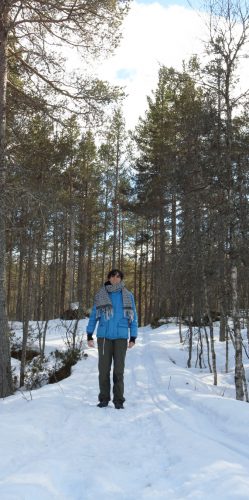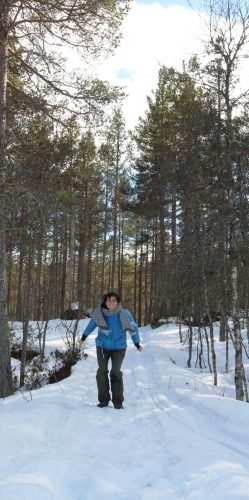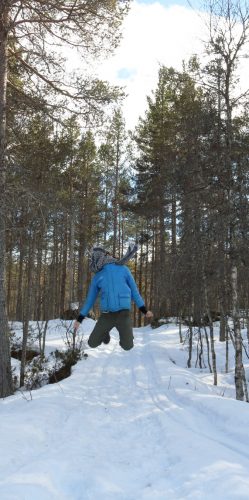Notebook
Deforestation
The protection of four billion hectares of remaining forests on earth and replant many of which have already been lost are essential issues to restore the health of the planet. Since 2000, the coverage of forest cover has been reduced by 5 million hectares per year, with annual losses of 13 million hectares far exceeding the regrowth of 8 million hectares. The restoration of the vegetation and wooded land cover protects the soil against erosion, reduces flooding, and traps carbon.
Global deforestation is concentrated in the developing world. Tropical deforestation in Asia is mainly due to the growing demand for timber and increasingly by the expansion of palm oil plantations as fuel. In Latin America, the rapidly growing markets of soy and meat are jointly pressing the Amazon. In Africa, the culprit is mainly fuelwood collection and conversion of land for agriculture.
In recent years, reduction of forests in tropical regions has released 2.2 billion tons of carbon into the atmosphere each year. Meanwhile, expanding forests in the temperate regions are absorbing about 700 million tons of carbon. Ultimately, therefore, about 1.5 million tons of carbon are released into the atmosphere each year due to forest loss, about one quarter of the emissions from burning fossil fuels
Deforestación
La protección de las cuatro mil millones de hectáreas de bosques que quedan en la Tierra y replantar muchas de los que ya se ha perdido son cuestiones esenciales para restaurar la salud del planeta. Desde el año 2000, la cobertura de masa forestal se ha reducido en 5 millones de hectáreas cada año, con pérdidas anuales de 13 millones de hectáreas que exceden en mucho el rebrote de 8 millones de hectáreas. La restauración de la cubierta vegetal y arbolada de la tierra protege el suelo contra la erosión, reduce las inundaciones, y atrapa carbono.
La deforestación global se concentra en el mundo en desarrollo. La deforestación tropical en Asia se debe principalmente a la creciente demanda de madera y cada vez más por la expansión de las plantaciones de aceite de palma como combustible. En América Latina, los mercados de rápido crecimiento de la soja y la carne están presionando conjuntamente el Amazonas. En África, el culpable es principalmente la recolección de leña y la conversión de tierras para la agricultura.
En los últimos años, la reducción de los bosques en las regiones tropicales ha liberado 2,2 mil millones de toneladas de carbono a la atmósfera cada año. Mientras tanto, los bosques en expansión en las regiones templadas están absorbiendo cerca de 700 millones de toneladas de carbono. A fin de cuentas, por lo tanto, alrededor de 1,5 millones de toneladas de carbono son liberadas a la atmósfera cada año debido a la pérdida de bosques, cerca de una cuarta parte de las emisiones por la quema de combustibles fósiles.
Norway saved their forests
In the late nineteenth century, the government realized they were not going to be trees.
He decided to do something quite radical: start measuring the forest.
In 1919, the Norwegian government launched an ambitious plan. Norway would thus become the first country in the world to assess the state of their forests long term and take action.
It is almost a century ago and now leads the Institute for Research Bioeconomic Norway. Each 5-year cycle measures taken in 15,000 locations.
With this information they can make an estimate of what areas were healthier, which were growing faster, how much could be exploited sustainably, and what aspects of the forest should be preserved as habitat for endangered species.
When replant the forest industry, which is growing usually a group of trees less diverse than it had before. So although there is more wood in these managed forests, there is often less biodiversity, and these new areas do not seem wild spaces.
Only about 4% of the forest is protected as nature reserves and national parks. The rest is handled, especially sustainable timber harvest, economic objectives and will eventually be cut at some point.
In recent decades, the government has revised its approach. In particular, more attention to preserving biodiversity, for example in areas with rare and endangered species sets. When the forest is cut, it is replaced often through controlled reforestation programs.
Noruega salvó sus bosques
A finales del siglo XIX, el gobierno se dio cuenta de que no iban a quedar árboles.
Decidió entonces hacer algo bastante radical: empezar a medir el bosque.
En 1919, el gobierno noruego puso en marcha un ambicioso plan. Noruega se convertiría así en el primer país del mundo en evaluar el estado de sus bosques a largo plazo y tomar medidas al respecto.
Se hace desde hace casi un siglo y ahora la lleva el Instituto de Investigación Bioeconómica de Noruega. Cada ciclo de 5 años se toman medidas en 15.000 lugares.
Con esta información pueden hacer una estimación de qué áreas estaban más sanas, cuáles estaban creciendo más rápido, cuánto se podía explotar de forma sostenible, y qué aspectos del bosque deberían preservarse como hábitat de especies en peligro.
Cuando la industria replanta el bosque, lo que crece suele ser un grupo de árboles menos diverso que los que había antes. Así que aunque hay más madera en estos bosques manejados, hay con frecuencia menos biodiversidad, y estas áreas nuevas no parecen espacios salvajes.
Solo alrededor del 4% del bosque está protegido como reservas naturales y parques nacionales. El resto se maneja con objetivos económicos, sobre todo la cosecha de madera sostenible, y acabará siendo cortado en algún momento.
En las últimas décadas, el gobierno ha revisado su enfoque. En especial, se pone más atención en preservar la biodiversidad, por ejemplo en áreas que tienen especies raras y en peligro. Cuando se corta el bosque, se reemplaza a menudo a través de programas controlados de reforestación.
Norway has triple wood in the forests which had made 100 years.The annual harvest is only half of the wood that grows each year, so the forests are growing.
This growth is enough to clean 60% of the annual emissions of greenhouse gases.
The hardest fight: climate change.
Chisholm and his colleagues are collecting genetic data and attributes of trees and then combining these data with the life history of the same, which in many cases takes documenting almost 100 years.
Understanding how these trees have responded to climate change that has already taken place in the last century, hope predict how they will respond to even greater changes next.
Noruega tiene el triple de madera en los bosques que la que tenía hace 100 años. La tala anual solo supone la mitad de la madera que crece cada año, así que los bosques están creciendo. Este crecimiento es suficiente para limpiar un 60% de las emisiones anuales de gases de efecto invernadero.
La lucha más difícil: El cambio climático.
Chisholm y sus colegas están recogiendo datos genéticos y atributos de los árboles y luego combinando esos datos con la historia vital de los mismos, que en muchos casos se lleva documentando casi 100 años.
Entendiendo cómo estos árboles han respondido al cambio climático que ya ha tenido lugar en el último siglo, esperan predecir cómo responderán a los cambios todavía mayores del próximo.
Video: Recording, editing and music. Paloma Peñarrubia



